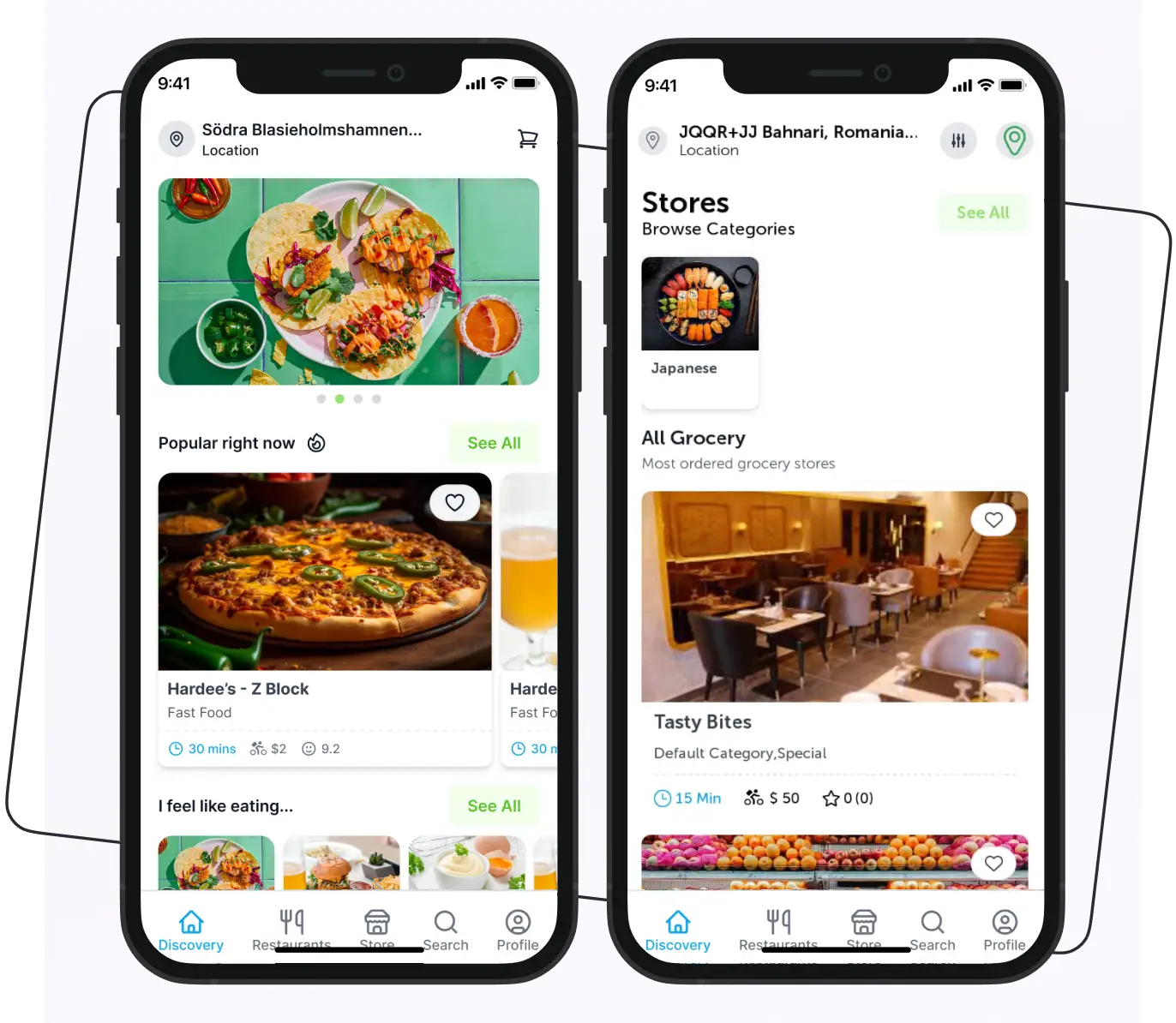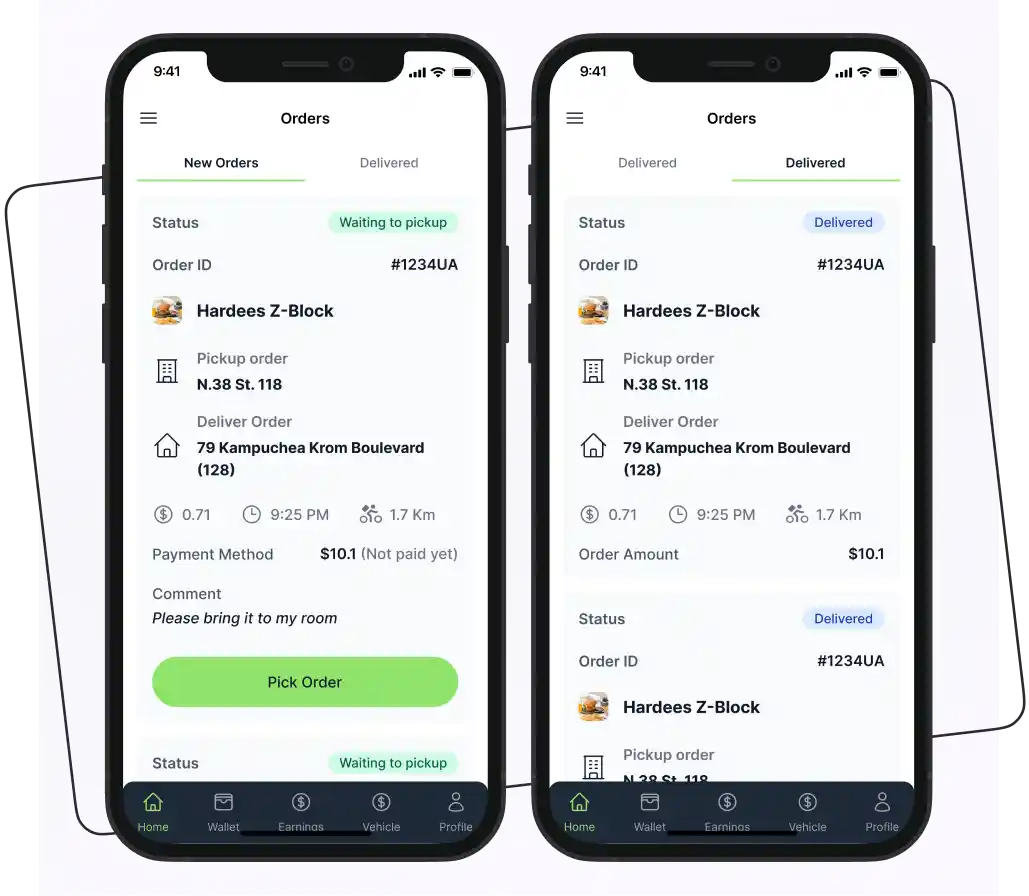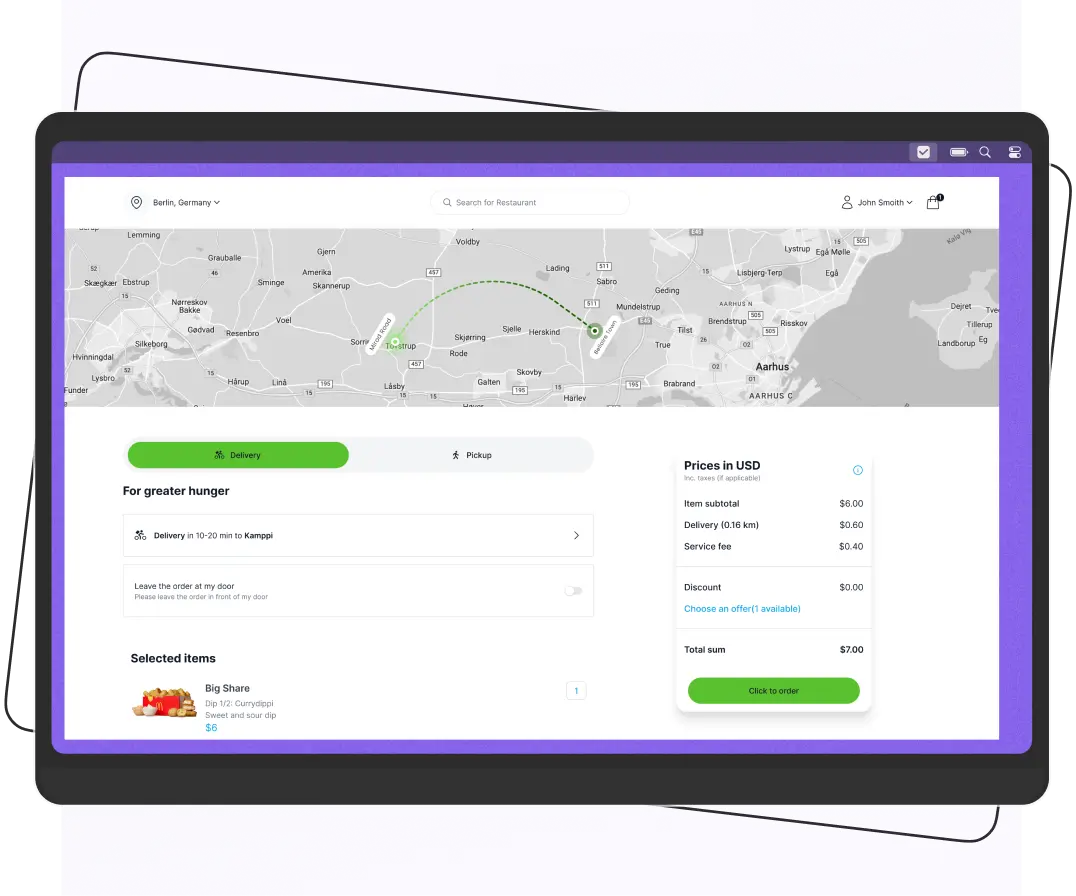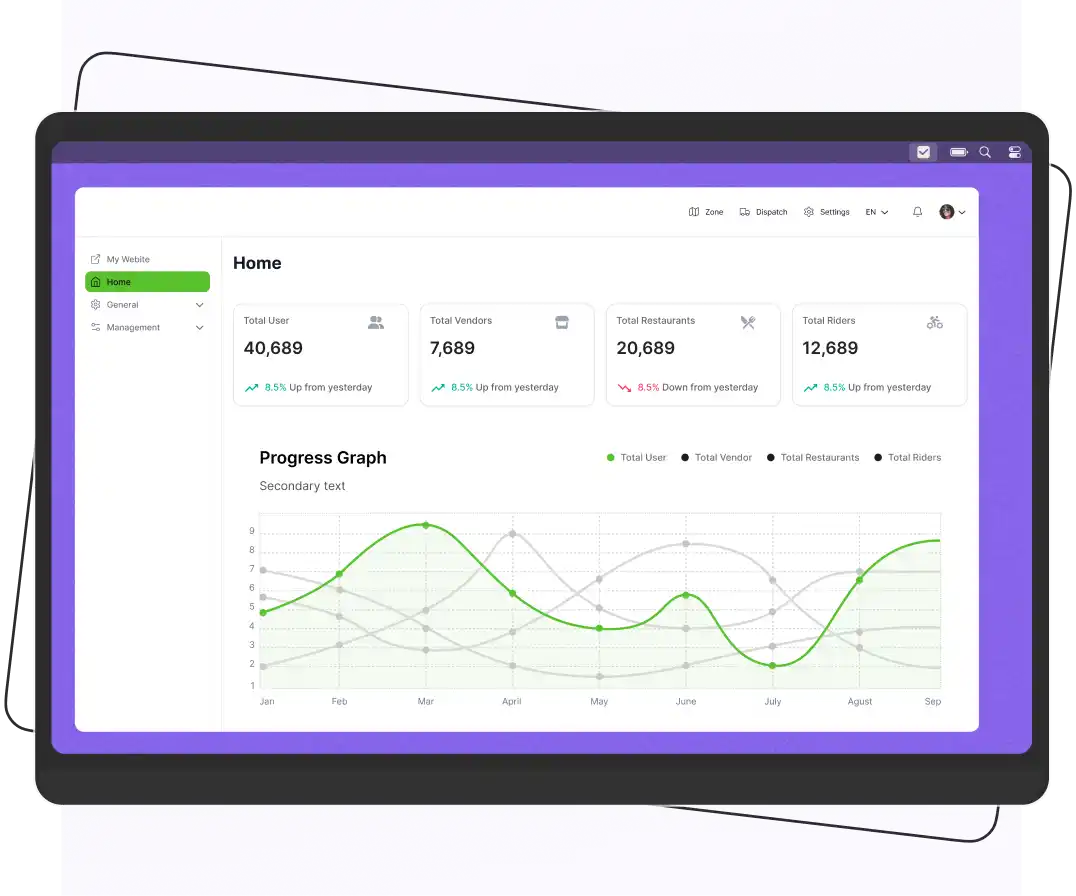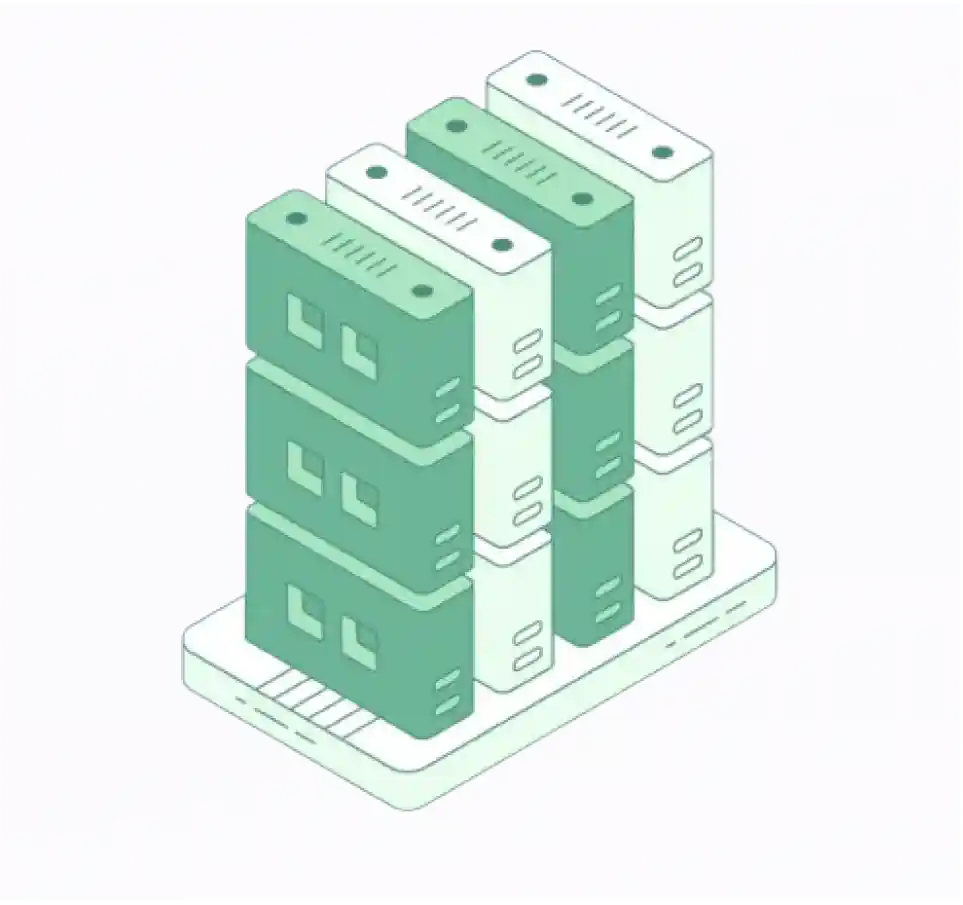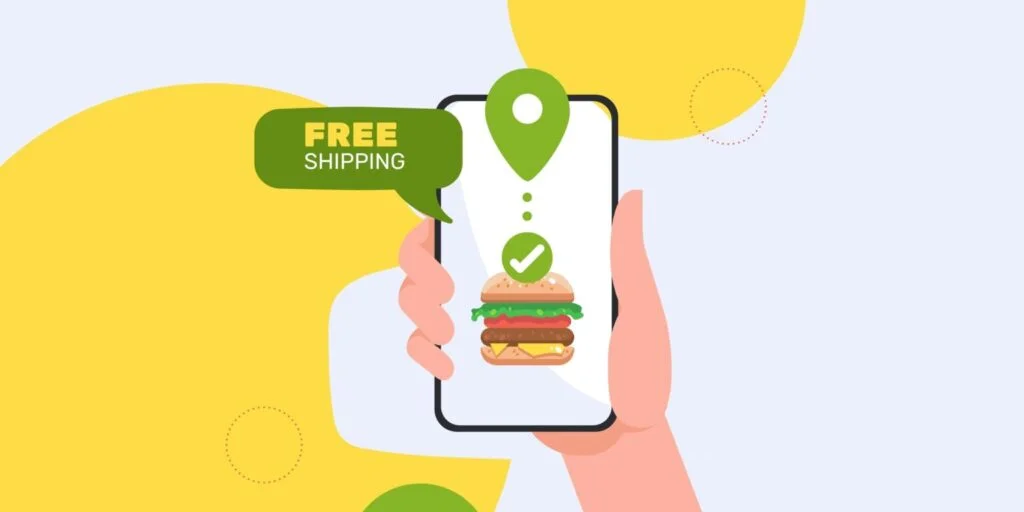
Key Takeaways
- Food Ordering Apps: They are the vital tools for restaurants aiming to boost sales, improve customer convenience, and remain competitive in the growing food delivery market.
- Global Food Delivery Market: The global online food delivery market is projected to reach $1.85 trillion by 2029, highlighting the importance of digital ordering systems.
- Top Food Ordering Apps: The top 10 food apps for restaurants in 2025–2026 include DoorDash, Grubhub, ChowNow, and Zomato.
- Apps are Categorized Based on Suitability: Large platforms for exposure, like DoorDash and Grubhub, and white-label solutions for independence, like CloudWaitress and HiMenus.
- Pricing, Pros, Cons, and Unique Features: Each platform is laid out to help restaurant owners make informed decisions.
- Choosing the right platform: It depends on your restaurant’s size, goals, and need for control, brand visibility, or customer experience.
Now, restaurants can no longer afford to rely solely on dine-in traffic. If you’re looking to grow your revenue, build a loyal customer base, and stay ahead of the competition using a food ordering app for restaurant is the best decision.
Today’s customers expect fast and user-friendly ways to order their favorite meals. That’s why food ordering apps have become a cornerstone of success in the restaurant industry.
With the global online food delivery market projected to reach $1.85 trillion by 2029, now is the perfect time to implement digital transformation.
Whether you’re running a small cafe, a multi-location franchise, or a cloud kitchen, the right ordering platform can streamline everything from managing orders and engaging with customers to tracking deliveries.
In this blog, we cover the top food ordering apps for restaurants, highlight their standout features and pricing models, and help you choose the best solution.
Best Apps For Ordering Food at Restaurants, Including Third-Party Platforms
What is the best online ordering system for restaurants?
Online food ordering apps provide convenience to customers to order food from their favorite restaurants at any time or from anywhere. These apps make the entire online food ordering process effortless.
Here is a list of the top food-ordering apps that make your dining experience remarkable.
1. DoorDash
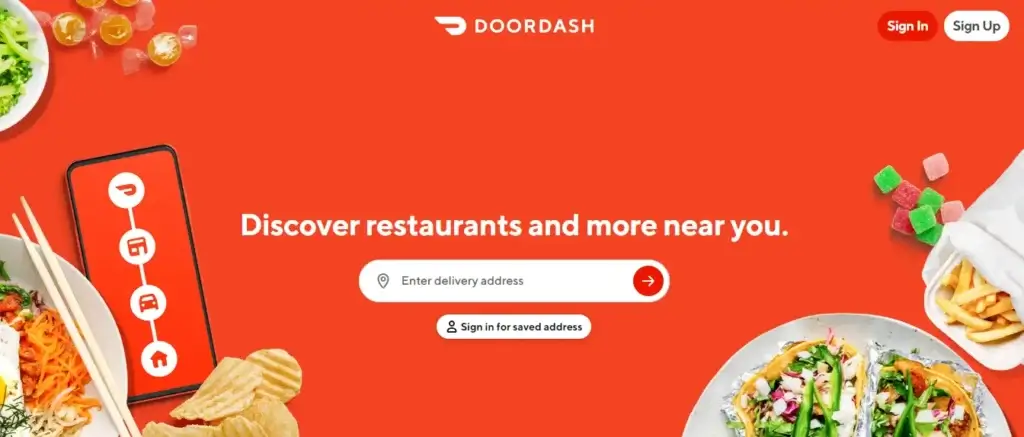
Best for: Wider reach and maximum exposure
DoorDash is the best online food delivery app in the USA. It is available in over 4,000 North American cities. In 2024’s second quarter, DoorDash’s sales climbed 23% yearly to $2.6 billion.
The best online food ordering and delivery platform for restaurants in the USA has partnered with several restaurants, allowing customers to explore a wide range of cuisines, from fast food to Chinese and more.
In addition, DoorDash has over one million riders who deliver food in 30 countries, and more than 42 million active users of its app.
Features of DoorDash
- Customer history
- Delivery tracking
- Better customer experience
- Subscription service
- Schedule delivery
| Pros | Cons |
| Access to the DoorDash network | High commission fees |
| Flexible pricing plans | Less control over the customer experience |
| Large customer base and exposure | Increased operational costs |
DoorDash Pricing
DoorDash offers different pricing plans, such as:
- Basic: After a 7-day trial, get a 20% commission per delivery order
- Plus: After a 30-day trial, get a 25% commission per delivery order
- Premier: After a 30-day trial, get a 29% commission per delivery order
- Marketplace Plans: There are no payment processing costs, and you are free to modify or terminate your plan whenever you choose.
2. CloudWaitress

Best for: Independent restaurants
CloudWaitress is another popular online food ordering system for restaurants. It allows you to set up your online ordering system for your food business.
With CloudWaitress, restaurants can run their business successfully and provide a better experience to their customers.
Features of CloudWaitress
- Multi-currency
- Multi-language
- Online payments
- Third-party integrations
- Multi-restaurant management
- Table reservation
| Pros | Cons |
| Wide range of integrations | Limited advanced analytics |
| Cost-effective | Require ongoing maintenance |
| Scalable |
CloudWaitress Pricing
Below are the plans that CloudWaitress offers.
| Standard | Starter | Enterprise |
| $39 per store/month | Free | +$299 /month |
| Features | ||
| Unlimited orders and bookings | All standard features | All standard features |
| Promotional codes | 100 orders and reservations | Unlimited orders and bookings |
| Online ordering website | Unlimited staff accounts | |
| Landing page website | High priority support | |
| Performance report | ||
| 5 staff accounts | ||
| All system integrations | ||
Supercharge your deliveries with Enatega.
Get Started3. Grubhub

Best for: Fast food, fast casual, and even some fine dining establishments
Grubhub is an American food ordering platform. This platform has the largest and most comprehensive network of restaurants. From the Grubhub app, placing orders is a hassle-free process. It is available in over 4,000 cities in the US and Canada. From small local eateries to well-known restaurants, all are available on Grubhub.
Features of Grubhub
- User-friendly interface
- Alerts/notifications
- Order management
- Order tracking in real-time
- Feedback
| Pros | Cons |
| Excellent customer support | High commission fees |
| Large customer base across the USA | Dependence on the third-party platform for revenue |
| Access to marketing and promotion tools |
Grubhub Pricing
Grubhub charges restaurants a few different fees.
- Marketing commission: This fee is charged by the restaurants for listing and promoting the restaurant on Grubhub. Depending on the pricing package selected, it can be anywhere between 5% and 20% of each order.
- Order processing fee: This cost includes fraud monitoring and credit card processing.
- Delivery fee: All orders completed by Grubhub drivers are subject to a 10% delivery fee if a restaurant uses Grubhub’s delivery service. Delivery expenses, including driver compensation and background checks, are covered by this charge.
4. Delivery.com

Best for: Small and local businesses
Delivery.com is an online food ordering platform that delivers food, groceries, beverages, and more from your favorite restaurants, grocery stores, and liquor stores near you. This platform also provides laundry and dry cleaning services. It connects customers with local services and businesses.
Features of Delivery.com
- Group ordering
- Loyalty program
- Online ordering
- User-friendly mobile access
- Order tracking
| Pros | Cons |
| No exclusive partnership requirement | Smaller customer base |
| Restaurants can use their drivers | Limited market presence |
Delivery.com Pricing
For restaurants using Delivery.com, the pricing structure includes a combination of setup fees, service fees, and commission fees. Typically, these commission fees are based on a percentage of each order, with specific rates varying depending on the restaurant’s agreement with the platform.
Delivery.com charges restaurants a commission fee that can be around 15% or higher per order.
Additionally, third-party delivery services like Delivery.com might also have transaction fees that are generally added to each order, impacting overall revenue margins for restaurants.
5. ChowNow
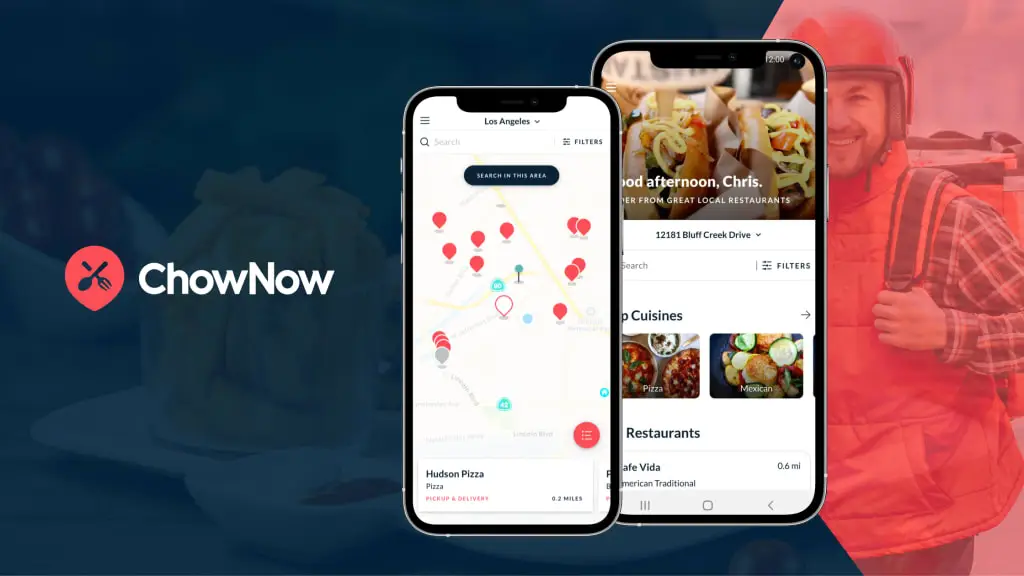
Best for: Independent, small, and mid-sized restaurants looking for online ordering solutions.
ChowNow is a top mobile ordering system that makes the food ordering process hassle-free on iOS and Android apps. The app allows the option for customers to pick up and deliver from their favorite restaurants.
In addition, ChowNow is one of the best food ordering apps for restaurants that help them organize their operations. Plus, this platform reduces the risk of errors and helps to engage new customers.
Features of ChowNow
- Customize food menus
- Track delivery location
- Rewards and loyalty program
- Notifications
| Pros | Cons |
| Marketing email tools | Requires a monthly subscription cost |
| Easy menu management | Integration challenges |
| Commission-free ordering |
ChowNow Pricing
ChowNow offers two pricing plans with different features.
- ChowNow Pro: $199 / mo
- ChowNow Premier: $275 / mo
6. HiMenus

Best for: Quick-service or fast-casual restaurants
HiMenus is an easy-to-use food-ordering app that provides several benefits and features to its customers. With just a few taps on the mobile phone, customers can order from their favorite restaurants, coffee shops, cafes, and cloud kitchens. Therefore, whether you are craving a pizza, burger, or Italian cuisine, Himenus has you covered.
HiMenus also helps restaurants provide customers with a convenient and efficient way to order food. It also allows restaurants to reduce labor costs and paper waste.
Features of HiMenus
- Digital menu
- Various payment methods
- QR code ordering
| Pros | Cons |
| Brand consistency | Less brand recognition |
| Reduced staff costs | Limited delivery network |
| Flexibility | |
| Cost-effective |
HiMenus Pricing
HiMenus offers flexible payment plans with a 7-day free trial.
7. RestroApp
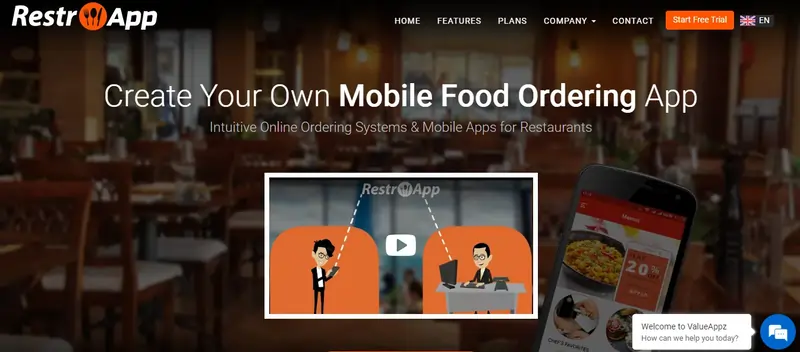
Best for: Small to medium restaurants
RestroApp is an online ordering system and mobile app for restaurants. It is a powerful food ordering app that can help restaurants improve their business in several ways. This platform delights your customers with a seamless digital food ordering experience.
With RestroApp, giving your customers the choice to order through your restaurant’s website will make them happy. Enhance their food ordering experience by letting them search for food items to order online from your website.
Features of RestroApp
- Offers and discounts
- Rewards
- Online payments
- Update customers with complete order details
| Pros | Cons |
| User-friendly interface | Initial setup can be time-consuming |
| Supports online reservations | Limited customization options |
| Integrates with payment systems | May require staff training |
| Subscription fees can add up. |
RestroApp Pricing
RestroApp offers two pricing plans.
- Standard
- Webstore, Customer app, Delivery app, and Marketing.
- Premium
- Everything in your custom branding and marketing.
8. Zomato
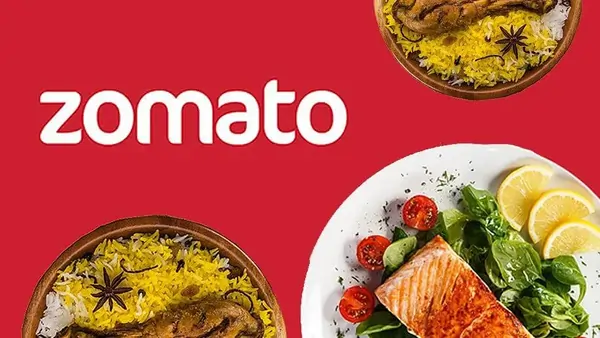
Best for: Urban dining, casual restaurants
If you want to get your favorite foods delivered quickly to your door, Zomato is the only app you need. You can order biryani to satisfy your Indian tastes, pizzas, burgers, or even a salad with chai or coffee. This food delivery and dining app is available in India and the UAE.
Zomato provides partner restaurant information, user reviews, menus of restaurants, and food delivery options.
Features of Zomato
- Contactless delivery
- Available in 11 languages
- Book a table
- Review photos and map directions
- Subscription
| Pros | Cons |
| 24/7 support | Zomato charges fees and commissions for listing, advertising, and delivery services |
| Contactless dining | Restaurants don’t own customer data |
| Zomato handles logistics |
Zomato Pricing
Zomato’s standard model often includes a commission on orders, which typically ranges from 15% to 30%, depending on the type of partnership chosen and any promotional features included.
Some restaurants also opt for additional marketing packages to boost visibility on the app, which can incur extra charges.
There’s also the “Zomato Gold” program, designed to drive traffic by offering benefits like discounts to loyal customers.
For restaurants, Zomato charges a flat fee or annual membership for listing in this program, though the exact cost is generally negotiated and varies per establishment.
Additionally, Zomato has a subscription service for users, allowing them benefits like free delivery and discounts, which indirectly benefits partner restaurants by increasing order frequency.
9. Indolj
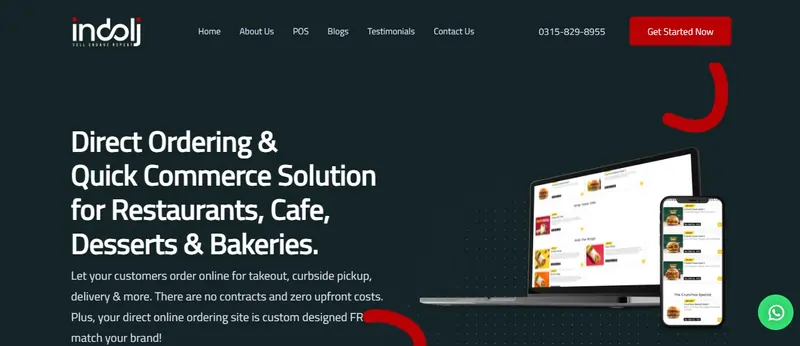
Best for: Independent local restaurants
Indolj is a free food ordering app for restaurants that helps them satisfy their customers’ cravings. 400+ restaurants are available on Indolj. It is a reliable online ordering platform to place food orders.
Features of Indolj
- 24/7 support
- Easy to set up
- Customer feedback
- Delivery management and tracking
- Best user experience
| Pros | Cons |
| Offer marketing tools | Integration and customization costs |
| Easy setup and no limits on menu items, customers, or orders | Doesn’t provide delivery services |
| Limited control over the data processing |
Indolj Pricing
Indolj’s pricing plans are generally subscription-based, with options for monthly or yearly payments that cover platform maintenance, customer insights, and engagement tools.
10. Foodpanda

Best for: Casual restaurants
Foodpanda is a popular food ordering platform serving several countries worldwide. From the Foodpanda app, customers can order food and groceries to their doorstep. They offer a wide range of options to order from local to international food chains.
Features of Foodpanda
- Ordering and checkout
- Ingredient choice
- Multiple order placement
- Order history
- Tip provider
| Pros | Cons |
| Brand visibility | High competition |
| Marketing and promotions | Limited control over branding |
| Onboarding support |
Foodpanda Pricing
The commission rate that Foodpanda charges restaurants is about 25%.
You can also create the Foodpanda clone app for your business if you don’t need to use third-party delivery apps.
Comparison Between Different Food Ordering Platforms
| App | Features | Pricing | Availability |
| DoorDash | Customer history, delivery tracking, subscription service, and scheduled delivery | Basic (20% commission), Plus (25% commission), Premier (29% commission) | 4,000+ cities in North America |
| CloudWaitress | Multi-currency, multi-language, online payments, third-party integrations, table reservation | Standard ($39/month), Starter (Free), Enterprise ($299/month) | Popular in the restaurant industry |
| Grubhub | User-friendly, order management, real-time tracking, and feedback | Marketing commission (5-20%), order processing fee, delivery fee (10% if Grubhub’s drivers are used) | 4,000+ cities in the U.S. and Canada |
| Delivery.com | Group ordering, loyalty program, online ordering, mobile access, order tracking | Setup fees, service fees, and commission fees (around 15% or higher per order) | U.S., offering food, groceries, laundry |
| ChowNow | Customizable menus, delivery tracking, rewards program | ChowNow Pro ($199/month), ChowNow Premier ($275/month) | US |
| Himenus | Digital menu, various payment methods, QR code ordering | Flexible plans with a 7-day free trial | Available in various regions |
| RestroApp | Offers and discounts, online payments, and order tracking | Standard (basic features), Premium (custom branding & marketing) | International |
| Zomato | Contactless delivery, multi-language support, and table booking | Commission (15-30%), additional marketing packages, Zomato Gold membership | India, UAE, select countries |
| Indolj | 24/7 support, easy setup, delivery management, and tracking | Subscription-based, monthly, or yearly engagement tools | Regional (400+ restaurants) |
| Foodpanda | Check out options, ingredient choice, and multiple order placements | Commission (around 25%) | Global, large food and grocery network |
Advantages of Using a Food Ordering App for Restaurants
Do you want to boost restaurant revenues without investing a fortune? Consider an online ordering app. More customers want their favorite restaurants to deliver and pick up.
Mobile apps are a must if you own a restaurant business. A customizable mobile ordering app is a one-stop restaurant solution to increase customer engagement. The mobile ordering app provides several benefits to restaurants and their customers.
Look below and learn the benefits of using mobile apps to help your restaurant outrank your competition.
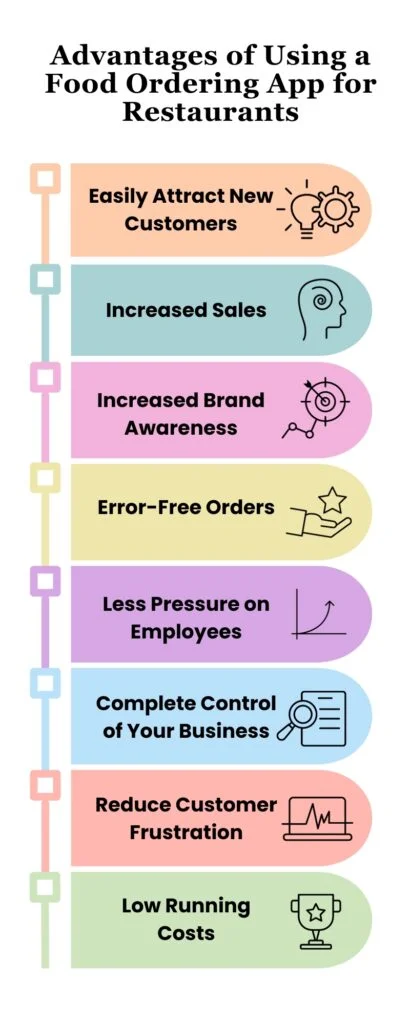
Easily Attract New Customers
It is a powerful tool to increase customer engagement. However, try to provide the right content on your restaurant app to attract customers. Reward your customers when they order from your food delivery app. It keeps the customers engaged, and they use your app more for placing orders.
Also, promote your app everywhere, from social media channels to your website. Make flyers and posters and distribute them to people. Put brochures on each table to let people who are eating in know they can also use your app to place their orders.
Increased Sales
With the help of a mobile app for your restaurant, you can quickly improve your overall sales and increase profit. The convenience of the mobile app encourages customers to place orders online from their favorite restaurants.
Increased Brand Awareness
Online ordering apps are a growing trend, and most restaurants do not have their own food ordering apps. Therefore, take advantage of it by building a food ordering app for restaurants that makes you stand out.
Error-Free Orders
If you take orders on the phone, there is a chance of more errors. The apps for ordering food in restaurants can lower the chances of human mistakes. Also, you can solve issues more quickly and avoid negative customer reviews.
Less Pressure on Employees
If you manage everything manually, from taking orders on the phone to answering customer queries, you need many employees. However, you can appoint a few employees to manage everything with the restaurant app ordering system.
In addition, it reduces the work pressure on employees, and they can take care of other tasks.
Complete Control of Your Business
It is the main advantage of creating your own food delivery app for your restaurant. You can have full control of your business from design to the food ordering process. You can easily access your customer data, which you can use with their permission for marketing purposes.
Reduce Customer Frustration
With an app for ordering food at restaurants, customers can easily browse menus, check customer reviews, pricing, and restaurant information. This is a convenient way for customers to place an order online with just a few taps on their mobile phone.
Low Running Costs
The expense of maintaining an application is relatively low. You can choose a service provider who will build one for you at a monthly or annual cost, or you can pay an app developer to create one from scratch.
How to Choose the Right App for Your Restaurant?
Choosing the best restaurant ordering system can involve several factors that meet your needs. Below is a list of factors that will help you choose the right one.

Quick and Simple Customization
Remember your requirements when you pick the restaurant ordering app. Select the ordering system that is easy to customize according to your requirements and helps you manage everything effectively. The system should be adaptable and flexible, allowing restaurant owners to make changes quickly and easily.
Basic Features
An online ordering system must have basic features that can help you streamline your business tasks. Ensure they have all the features, such as order tracking, various payment methods, location navigation, and more you need. Otherwise, you will face problems.
Integration with Existing Systems
The ordering system should easily integrate with your existing Point of Sale (POS) system. This integration can make handling orders, keeping track of supplies, and doing other business-related tasks easier.
Menu Management
The food ordering software should make managing menus simple and customizable. Changing menu items, titles, prices, and availability should be easy at any time.
Reporting
It is another crucial factor to consider when selecting the restaurant ordering system. You know the number of orders you have fulfilled daily, weekly, and monthly.
With this information, you can make an informed decision about marketing, purchasing, raw materials, etc. This reporting feature will be beneficial when it comes to measuring the ROI of your restaurant.
Scalability
The restaurant ordering platform should be scalable according to the restaurant’s needs as it expands and grows. Also, it should be easy to use and set up without any advanced training.
How to Make a Food Ordering App For Your Restaurant? Step-by-Step Guide
Online ordering apps can help restaurants to take orders and execute them at a faster speed. With these systems, they can improve their brand value, boost the order volume, and organize restaurant operations.
Here are some steps for building a food ordering app for restaurants.
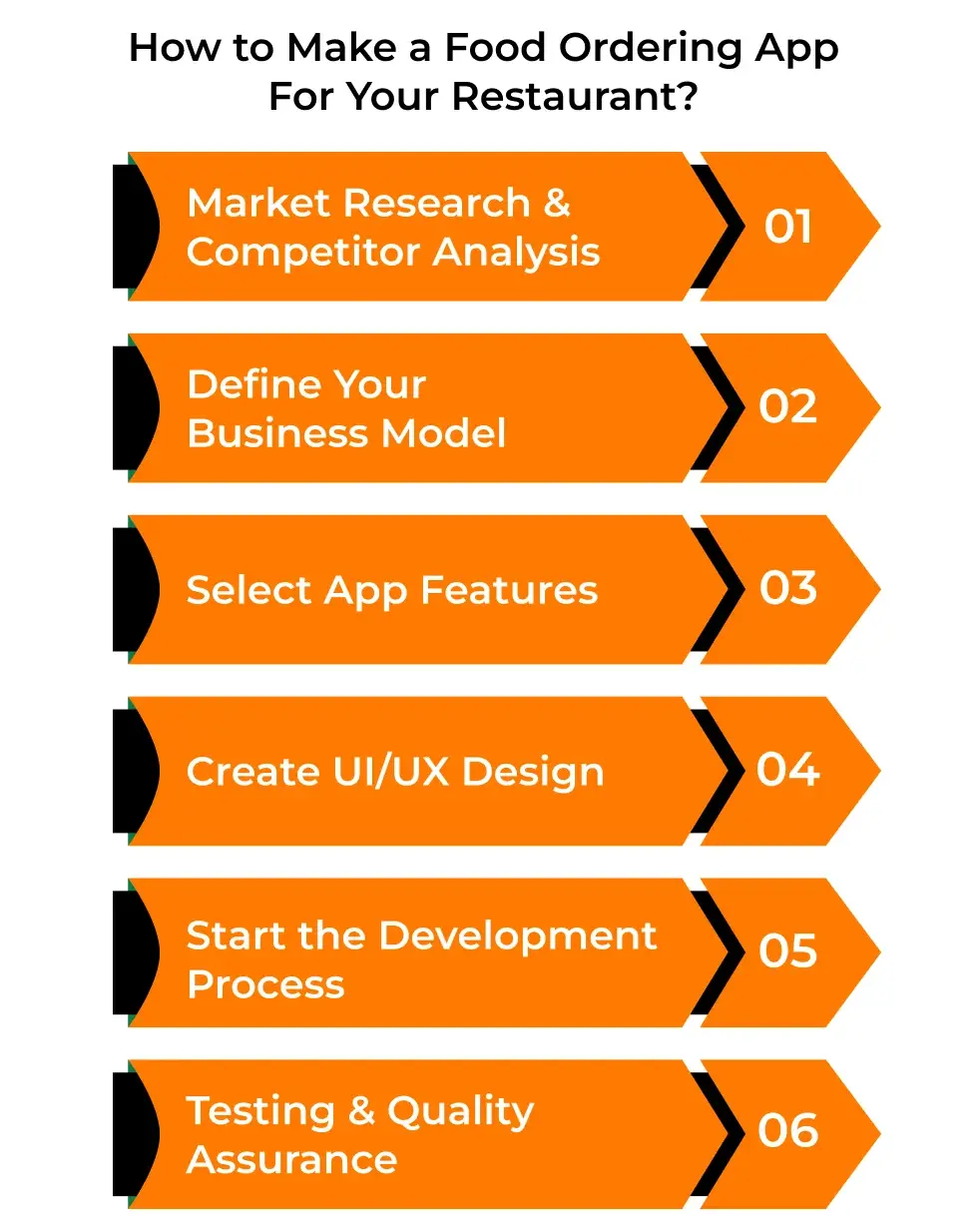
Define Your Objective
Clearly define your objective and goal for your online ordering app. Identify the features you need in your app that make your app unique for the customers. Plus, thoroughly research and understand the current market trends and your target audience.
Select the Features
After researching and knowing your requirements, select the app features. Include all the features that make your app attractive to customers and increase your business sales.
Choose the Development Approach
Decide whether to build the native app or a cross-platform solution. Determine this by considering your requirements, budget, and long-term goals.
Start the Development
Create the UI/UX design of the app. Make sure it is user-friendly and customers can easily use the app without hassle. The design should be visually appealing to the customers. After the design, start the backend development and implement each feature.
Testing
Do a lot of testing to find and fix bugs and other problems. Make sure the app works on various devices and running systems by testing it on them.
Launch the App
After the testing, launch the app on the Google Store and the Apple Store. Start promoting the app on all social media channels and make strong marketing strategies for attracting customers.
Cost for Online Food Ordering System
Look at the table below and understand the estimated cost of an online food ordering system.
| Item | Cost (USD) |
| Development | |
| Frontend Development | $5,000 – $10,000 |
| Backend Development | $5,000 – $10,000 |
| Database Setup | $2,000 – $5,000 |
| Design | |
| UI/UX Design | $2,000 – $4,000 |
| Hosting | |
| Monthly Hosting Fees | $20 – $500 |
| SSL Certificate | $100 – $300 |
| Maintenance | |
| Monthly Maintenance | $100 – $500 |
| Marketing | |
| Initial Marketing Campaign | $1,000 – $5,000 |
| Ongoing Marketing | $500 – $2,000 |
| Total Estimated Cost | $15,720 – $37,300 |
FAQs
1. What is an online food ordering system?
An online food ordering system provides a seamless experience for customers and restaurant owners. With the help of a food ordering app, customers can browse several restaurants and cuisines and place orders without any hassle.
2. Which app is better for ordering food?
Zomato, Postmates, DoorDash, and UberEats are the best apps for ordering food online from various restaurants.
3. What do restaurants use for online ordering?
Restaurants use online ordering systems or platforms like Toast, Square, or third-party services like Uber Eats and Grubhub to facilitate orders and payments.
4. Does Instacart deliver food from restaurants?
Yes, Instacart offers delivery of food from selected restaurants, in addition to grocery delivery, depending on your location.
5. Why is ordering food online better?
Ordering food online offers several benefits, including:
- Convenience
- Time-saving
- A wider variety of options is available
- Provide the ability to read reviews and compare prices easily
- Contactless delivery
6. What is the most ordered food online?
The most ordered food online includes pizza, burgers, sushi, and Chinese cuisine. Pizza often ranks at the top due to its popularity and customizability.
7. What features should small restaurants prioritize?
Small restaurants should prioritize the following features:
- Online Ordering System: Easy-to-use interface for customers to place orders.
- Mobile Optimization: A responsive website or app for mobile users.
- Loyalty Programs: Incentives to encourage repeat customers.
- Integration with Delivery Services: Partnerships with delivery apps for broader reach.
- Social Media Presence: Active engagement to build community and promote specials.
- Menu Management: Simple updates for seasonal or daily specials.
- Customer Feedback System: Mechanisms to gather and respond to reviews.
- Payment Flexibility: Multiple payment options, including contactless payments.
8. What is the best food order app?
The best food order app can vary based on your location and preferences, but some popular options include:
- Uber Eats
- DoorDash
- Grubhub
- Postmates
9. Is it cheaper to order directly from a restaurant?
Yes, ordering directly from a restaurant can often be cheaper for several reasons, such as:
- No Third-Party Fees: Delivery apps charge restaurants a commission, which can increase menu prices.
- Special Deals: Many restaurants offer exclusive discounts or promotions for direct orders.
- Loyalty Programs: Some restaurants have rewards programs for direct customers.
10. Do restaurants prefer online orders?
Yes, many restaurants prefer online orders for several reasons, which include:
- Reduce labor cost
- Streamlined operations
- Increased sales
- Contactless options
11. Why do restaurants charge more on delivery apps?
Below are some reasons that show why restaurants charge more on delivery apps.
- Commission Fees: Delivery services take a percentage of each order, which can lead restaurants to raise prices.
- Operational Costs: Increased costs for packaging and delivery logistics can be reflected in menu prices.
- Market Demand: Higher demand for convenience may allow restaurants to charge more on these platforms.
- Promotions and Discounts: Restaurants may offer lower prices for direct orders, making app prices seem higher.
Supercharge your deliveries with Enatega.
Get StartedConclusion
The food ordering app for restaurants is crucial for the success of a restaurant in the digital age. These apps help make profits and add value to users’ lives. Therefore, whether you’re running a small restaurant or a large food chain, food ordering apps help you succeed in the food delivery industry.
So, if you want to make a food ordering app for your business, consult the best food delivery app development company,Enatega.
Book your demo now and get the customized app for your business.








